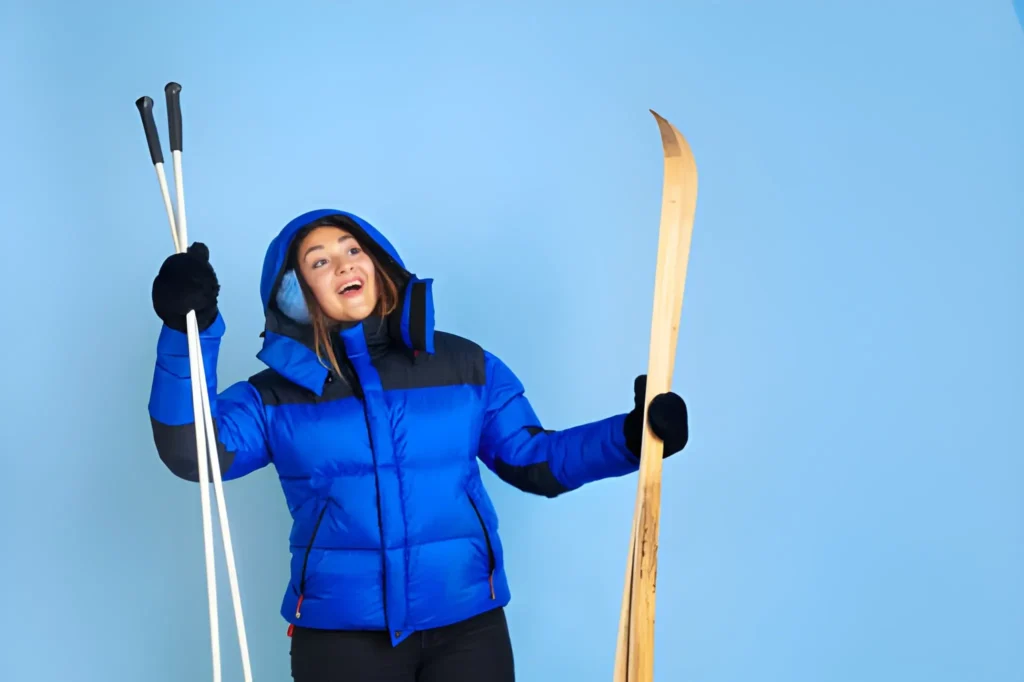Table of Contents
ToggleChoosing the right ski jacket is one of the most important decisions any winter sports enthusiast can make. A high-quality ski jacket doesn’t just protect you from the cold — it enhances your performance, keeps you dry during heavy snow, and helps regulate your temperature while you move. Modern ski jackets are much more than simple outerwear; they are advanced pieces of sports engineering that combine insulation, ventilation, and ergonomic design. Before selecting your jacket, it’s essential to understand how different features contribute to comfort and safety on the slopes. Factors such as breathability, water resistance, insulation type, and layering compatibility play major roles. A ski jacket must withstand wind and snow but also let your body release moisture to prevent overheating during active skiing. The best models today are designed to meet both professional and recreational skiers’ needs, adapting to diverse weather conditions and ensuring unrestricted movement on every turn. Whether you’re on a snowy mountain in Austria or an artificial slope closer to home, the right jacket transforms your experience from merely tolerating the cold to enjoying every descent with confidence.
Types of Ski Jackets: Hardshell, Softshell, and Insulated
Ski jackets generally come in three main categories: hardshell, softshell, and insulated. Each type serves a different purpose depending on your skiing style and environment. Hardshell jackets are built for extreme weather and high altitudes, offering maximum waterproof protection thanks to durable membranes like Gore-Tex or Dermizax. They’re lightweight and ideal for layering, letting you adjust insulation based on temperature. Softshell jackets, on the other hand, prioritize flexibility and breathability. They’re perfect for milder conditions or for skiers who value mobility and ventilation during intense activity. The fabric is typically treated with a DWR (Durable Water Repellent) coating, which repels snow and light rain while maintaining comfort. Insulated ski jackets combine an outer waterproof shell with built-in thermal padding — synthetic (like Primaloft) or natural (down). These are great for colder climates or for people who prefer simplicity without multiple layers. Many brands also offer hybrid jackets, blending hard and softshell panels for the best of both worlds: protection where needed and flexibility elsewhere. Understanding these distinctions helps you choose the right ski jacket for your needs, ensuring optimal warmth, protection, and freedom on the slopes.
Key Technologies That Make a Difference
The true power of a ski jacket lies in the technology behind it. Gore-Tex remains the gold standard in waterproof-breathable materials, offering unmatched resistance to wind and moisture while allowing perspiration to escape. Jackets made with Gore-Tex are durable and suitable for both recreational and professional skiing. Another innovation, Primaloft insulation, delivers high warmth-to-weight performance — even when wet — and is used by brands like Peak and 4F for reliable cold protection. Softshell technology combines elasticity and weather resistance, providing better comfort during physical activity. For safety, some high-end jackets include RECCO reflectors, which help rescuers locate skiers in case of an avalanche. Additionally, features like fully taped seams, waterproof zippers, snow skirts, and underarm ventilation zips are essential for keeping water and snow out while maintaining airflow. The latest collections also use eco-friendly materials such as recycled polyester or PFC-free water repellents, showing how innovation can align with sustainability. Understanding these technologies empowers you to select a jacket that not only keeps you warm but also supports your performance in a variety of alpine environments.
Leading Brands and Their Innovations
When it comes to performance and durability, certain brands stand out for their continuous improvement in ski jacket technology. Brugi, an Italian brand with a long history in winter apparel, focuses on functionality and comfort at accessible prices. Their jackets feature waterproof coatings, thermally efficient padding, and adjustable ventilation systems. 4F, a Polish sportswear company, is known for combining modern design with high-performance fabrics, often using advanced synthetic insulation and breathable membranes. Peak and Under Armour take a more athletic approach, incorporating moisture-wicking technology and ergonomic fits inspired by active training gear. Mizuno, meanwhile, applies its Japanese precision and innovation to outdoor clothing, creating lightweight yet thermally strong jackets suitable for professional use. Each brand has its own philosophy, but they share a common goal: to protect, perform, and endure. When you choose a jacket from one of these reputable names, you’re not just buying outerwear — you’re investing in years of research, technical expertise, and mountain-tested reliability. These brands ensure that every descent, lift ride, and snowy day is met with comfort, warmth, and confidence.
Tips for Choosing the Perfect Ski Jacket
Before making your purchase, consider how and where you plan to ski. For example, if you often ski in heavy snow or windy conditions, prioritize a waterproof hardshell jacket with a high hydrostatic rating (at least 10,000 mm). For more dynamic skiing or cross-country activity, a lightweight softshell with breathability and flexibility might be ideal. Always check for practical details — adjustable hoods that fit over helmets, snow skirts to block powder, and zippered pockets for storage. Layering is also key: if you prefer versatility, go for a shell and combine it with mid-layers like fleece or synthetic insulation. Don’t overlook style, either — ski jackets today come in a range of colors and fits, from sporty to minimalist urban looks. Comfort should always come first, so try different models and move your arms to test flexibility before buying. Finally, remember that your ski jacket is an investment in your comfort and safety. By choosing a well-constructed, technically advanced model, you ensure that every ski trip — whether on a mountain resort or a backcountry trail — is not only enjoyable but also worry-free, letting you focus on what truly matters: the thrill of the ride.
Also Read-How to Layer Clothes for Comfort and Style in Cold Weather

